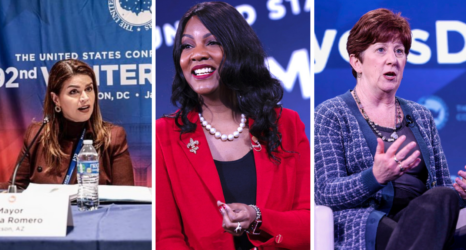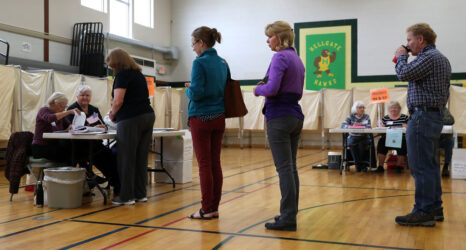Exactly one year after the disastrous 2016 presidential election, the Democratic Party swept statewide races in New Jersey and Virginia, making significant gains among voters in suburban communities that traditionally favor Republicans. Democrats’ election victories were driven by women, young people, people of color and LGBT people galvanized in opposition to President Donald Trump’s agenda.
In exit polls in the Virginia gubernatorial race, 39 percent of voters said health care mattered most in how they decided to vote—and 77 percent of them voted for the Democrat. Thirty-four percent said they voted to express their opposition to Trump; only 17 percent of Virginia voters wanted to support him.
In New Jersey and Washington state, Democratic victories secured full control of both the legislature and the governorship. Among those newly elected was New Jersey’s first African American lieutenant governor, Sheila Oliver. In special elections in Georgia, two state legislative seats long held by Republicans were won by Democrats. There was a slew of firsts in mayoral races across the country, with Charlotte, N.C.; Topeka, Kan.; and New Orleans electing their first women of color. Voters in Seattle elected the city’s first openly lesbian mayor, and in Manchester, N.H., a woman will be mayor for the first time. Immigrants and refugees won seats in the Virginia House, and in city council and mayor’s races across the country.
In Virginia, women’s votes were decisive in Democrat Ralph Northam’s victory in the governor’s race: Although men comprised a slightly larger portion of the electorate (51 percent), an overwhelming percentage of women voted for Northam—61 percent compared to only 48 percent of men, a 13-point gender gap. If only men had been allowed to vote, Republican Ed Gillespie would be governor. Some 91 percent of African American women voted for Northam, along with 58 percent of white women with college degrees and 54 percent of married women. Democrats swept all three statewide offices, with Justin Fairfax becoming only the second African American lieutenant governor in the state’s history.
All across the country, the key was Democrats—many of them women—who challenged long-entrenched Republican incumbents in tough districts gerrymandered to favor Republicans. “We saw feminist women, many running for office for the first time, win local races and state races,” says Eleanor Smeal, president of Feminist Majority. “We saw our political pipelines being flooded with feminist women who could soon become our next senators, our next governors and even our next president.”
Going into the 2017 elections in Virginia, Republicans outnumbered Democrats in the House of Delegates by a margin of 66 to 34. Charniele Herring, chair of the House Democratic Caucus, was determined to have Democratic candidates run in all districts held by Republicans. She crisscrossed the state recruiting candidates to run, and succeeded in having Democratic challengers for 54 of the 66 Republican-held districts. Thirty of these candidates were women, with 43 Democratic women running in total— a record number.
In an unexpected sweep, 11 of the women and four men won, flipping 15 seats, ousting a dozen conservative incumbents and ending election night with a 49-to-48 Democratic lead. At press time, recounts were ongoing in three races, the results of which could flip a legislative body that has been in
Republican hands since 2000. It’s even more amazing when you take into account the fact that these House districts are considered extremely gerrymandered to favor Republicans and are currently being challenged in the courts by Democrats.
The elections saw unprecedented involvement by grassroots activists determined to elect pro-women and progressive candidates. Many of the women candidates had attended the Emerge Virginia candidate-training program and were endorsed by Feminist Majority, EMILY’s List, Planned Parenthood Advocates of Virginia, Virginia NARAL and Virginia NOW. BlackPAC knocked on more than 53,000 doors in Charlottesville—the site of the deadly white nationalist rallies last summer—to canvass for voters, reports executive director Adrianne Shropshire. In the final days of the campaign, the group’s 30second ad featured images of the Civil Rights Movement cut with the violent 2017 protests. “White supremacy stormed into Charlottesville and is being used for political gain,” said the ad’s voice-over. “We’ve fought too hard for progress to watch it pushed back in the name of Making America Great Again.” Charlottesville recorded increased voter turnout, delivering 85 percent of its votes to Democratic Gov.-elect Northam.
Rarely do incumbents lose their seats—especially to challengers who have never run for office. State Rep. Scott Taylor (R) from Virginia Beach spoke for many shocked Republicans when he said, “I know folks that lost tonight who were going against candidates that I’d never even heard of.”
This is an excerpt from a feature in the Winter issue of Ms. Subscribe today to read the rest and become a member of the Ms. community.





